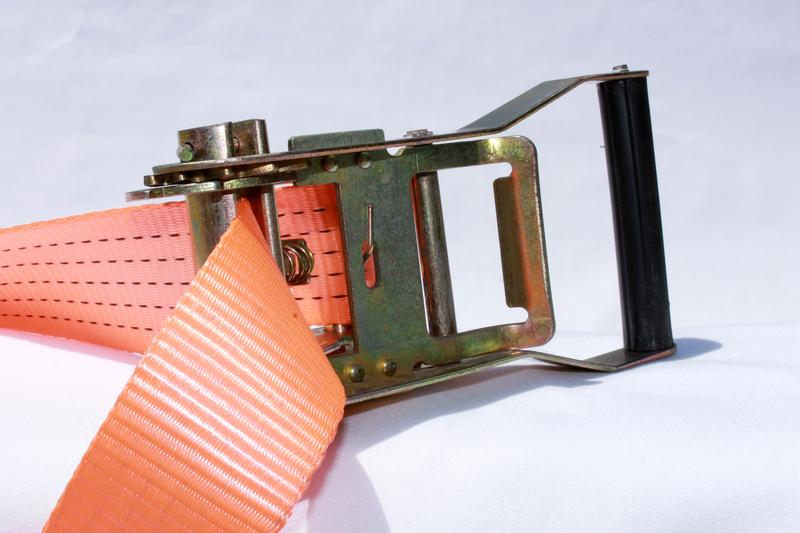Store Your Sofa Like a Pro: Tips for Longevity
Posted on 17/05/2025
Store Your Sofa Like a Pro: Tips for Longevity
Are you planning to store your sofa for a while--perhaps during a home renovation, a move, or due to seasonal changes? Your sofa is a significant investment that deserves special care when put away. Following expert advice and best practices for sofa storage can extend its lifespan, keep it looking pristine, and ensure it's ready for use whenever you need it again. In this comprehensive guide, we'll discuss essential strategies for storing your couch like a professional. Learn the secrets behind maximizing your sofa's lifespan and preventing common storage mistakes.
Why Proper Sofa Storage Matters
Your sofa is more than just furniture--it's the heart of your living space. Whether it's a plush sectional, a vintage Chesterfield, or a minimalist futon, improper storage can cause irreparable damage. Dust, humidity, pests, and mold are just some hazards that can ruin upholstery, warp frames, and deteriorate cushions. By taking steps to store sofas the right way, you save money and preserve comfort for years to come.
Main Risks of Poor Storage
- Mold and Mildew Growth: Trapped moisture can lead to mildew that spoils fabric and causes odors.
- Pest Infestation: Mice, bugs, and insects love nesting in upholstered furniture left exposed.
- Fading and Discoloration: Sunlight exposure and dust can fade vibrant colors and deteriorate fabric or leather.
- Structural Damage: Weak supports, sagging, or cracked frames result from improper stacking or placement.
- Permanent Odors: Damp or soiled areas can become impossible to freshen even with deep cleaning.
Storing your sofa correctly is essential to protect your investment--so let's break down each step for optimal results.

How to Prepare Your Sofa for Storage
Preparation is crucial: proper cleaning and packing will prevent most storage-related issues. Here are the key steps to getting your sofa ready to store:
1. Deep Clean the Entire Sofa
- Fabric Sofas: Vacuum every nook and cranny, removing dust, pet hair, and debris. Pre-treat stains with an upholstery-safe cleaner.
- Leather Sofas: Use a soft, damp cloth to wipe all surfaces, followed by a specialized leather conditioner to prevent drying and cracking.
- Wooden or Metal Components: Wipe these parts with a dry, clean cloth and apply furniture polish or rust inhibitor as needed.
Allow the sofa to dry completely before moving to storage. Trapped moisture is the leading cause of mold and mildew in stored sofas.
2. Disassemble, If Possible
For easier transport and to minimize stress on joints and supports, disassemble your sofa where possible:
- Remove legs, backrests, and cushions for sectional or modular sofas.
- Store screws and bolts in labeled bags taped to the respective parts.
- Wrap removed pieces separately to protect from scratches and pressure dents.
3. Use Quality Packing Materials
- Wrap the entire sofa in soft moving blankets or thick sheets for extra protection.
- Use bubble wrap or foam pads on wood and metal legs or armrests to prevent dings and scratches.
- Avoid using thin plastic wrap directly on upholstery for long periods--it can trap moisture and cause mold.
4. Choose the Right Cover
Invest in breathable covers like cotton or canvas. Plastics and other non-breathable materials can lock in moisture, increasing the risk of mold and mildew. Covers protect from dust, light, and accidental spills during storage or transit.
How to Store Your Sofa: Essential Tips for Longevity
Once you've prepped your sofa, it's time to make strategic decisions about the storage environment and setup. Here's how to store couches and sofas like a pro:
1. Choose the Right Type of Storage Unit
- Climate-Controlled Storage: This is the best option for maintaining consistent temperature and humidity, essential for protecting leather, fabric, and wooden frames.
- Indoor Storage: If climate control isn't available, at least choose an indoor unit to guard against weather, pests, and sunlight.
- Home Storage: If you're storing at home, select a clean, dry, low-traffic area--basements and attics are not always ideal unless humidity is well-controlled.
2. Elevate the Sofa
Place your sofa on pallets or blocks a few inches above the floor. This simple step will:
- Prevent absorption of ground moisture and condensation
- Protect from accidental water leaks, spills, or slight flooding
- Deter pests that typically crawl on the ground
3. Position with Space to Breathe
Avoid pushing the sofa flush against walls or stacking heavy items on top. Allow air circulation to prevent condensation and musty odors.
- Keep at least 6-12 inches between the sofa and any wall or other object.
- Never stack boxes, books, or furniture on top, as this causes dents and frame distortion.
4. Maintain Optimal Conditions
- Temperature: 55-75?F (13-24?C) is ideal for most furniture.
- Humidity: Keep levels between 30% and 50% to avoid both mildew (too high) and cracking (too low).
- Use dehumidifiers or moisture absorbers (like silica gel packs) in the storage space for added protection.
5. Regularly Inspect and Air Out
If storing for long periods, check the sofa every few months. Remove the cover and ensure no moisture, pests, or dust has collected. If possible, air out the room and the furniture periodically to maintain freshness and odor-free upholstery.
Special Considerations for Different Sofa Types
Not all sofas are alike--each material and style may need special care. Here's how storing different types of couches or sofas varies:
Storing Leather Sofas
- Condition the leather before and after storage to prevent cracks and stiffness.
- Store in a cool, dry, and dark environment to avoid fading and deterioration.
- Never cover with plastic for extended periods--leather needs to breathe.
Storing Fabric Sofas
- Deep clean fabrics before storage, especially after contact with food or pets.
- Use a breathable cloth cover and avoid damp or humid locations.
- Add moisture absorbers inside the cover to reduce mildew risk.
Storing Wooden-Framed Sofas
- Polish wood surfaces to seal from humidity and pests.
- Wrap exposed wooden feet and arms in bubble wrap or furniture pads.
- Avoid leaning heavy objects against the frame during storage.
Storing Antique or Heirloom Sofas
- Have valuable pieces appraised or inspected before storage.
- Consider additional insurance for rare or valuable sofas while in storage.
- Consult a professional conservator for high-value antiques or uniquely fragile materials.
Moving Your Sofa Into Storage: Safety and Technique
Getting your couch to and from storage safely is key for long-term sofa preservation:
Lift with Care
- Always lift from the frame or solid support points--not the arms, cushions, or backrest.
- Use quality moving straps and ask for help to prevent strain and drops.
Secure in Transit
- Wrap and pad all surfaces; use corner guards for leather or wood frames.
- Securely fasten the sofa in the moving truck to avoid shifting and scratches.
Beware Doorways and Narrow Halls
- Measure doors and passageways in advance of moving day.
- Pivot or disassemble as necessary to avoid scraping walls or damaging upholstery.
Bringing Your Sofa Out of Storage
After months or years in storage, your sofa will need some TLC before being the star of your living room again. Follow these steps for a smooth reunion:
- Remove the protective cover and inspect for damage, odors, or pests.
- Thoroughly vacuum and clean all surfaces.
- Polish leather and wood again to restore luster.
- Let the couch breathe in open air before heavy use.
- Assemble any removed parts securely, checking for missing bolts or pieces.
Expert Tips for Long-Term Sofa Storage
- Use furniture sliders when positioning your sofa in storage to avoid tearing underside fabric or damaging floors.
- Label all parts during disassembly for easy reassembly years later.
- Do not apply direct tape to leather, fabric, or finished wood--adhesive can cause staining and surface damage.
- Check your rental insurance for coverage of stored furniture in case of water leaks, fire, or theft.
- Log storage conditions (location, climate, prep steps) for each item so you can easily troubleshoot issues or make claims if needed.
Preserving Your Sofa's Longevity: Common Mistakes to Avoid
Even with good intentions, certain errors can drastically shorten your sofa's lifespan in storage. Avoid these frequent mistakes:
- Leaving food crumbs or stains uncleaned, attracting pests or causing permanent marks.
- Not allowing a fabric or leather sofa to dry completely before storage.
- Using cheap, thin plastic wrap that traps moisture and encourages mold.
- Stacking heavy boxes, books, or appliances on upholstered cushions.
- Storing furniture directly on damp concrete or attic floors.
- Neglecting to periodically check and ventilate the storage area.

Your Sofa's Next Chapter: Ready for New Adventures
Storing your sofa like a pro ensures that your couch will remain a stylish, comfortable, and cherished centerpiece for many years. With proper cleaning, preparation, high-quality materials, and the right environment, you're investing in your home's future comfort and style.
Whether you're stashing a beloved sectional during a remodel or preserving a leather heirloom for the next generation, following these simple tips will help your sofa shine through every stage of life. Your living room (and future self) will thank you!
Want More Furniture Care Tips?
- Visit our Home Care Blog for more upholstery, storage, and cleaning guides.
- Sign up for our newsletter to receive seasonal furniture maintenance checklists and tips.
- Have questions about your specific sofa? Contact our experts for personalized advice!
Store your sofa for longevity--be proactive, be thorough, and your favorite furniture piece will reward you with comfort for decades.













